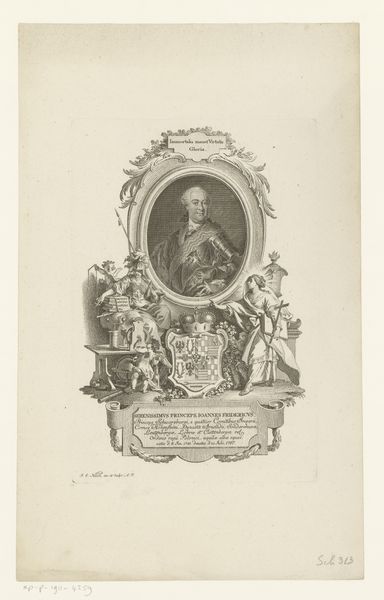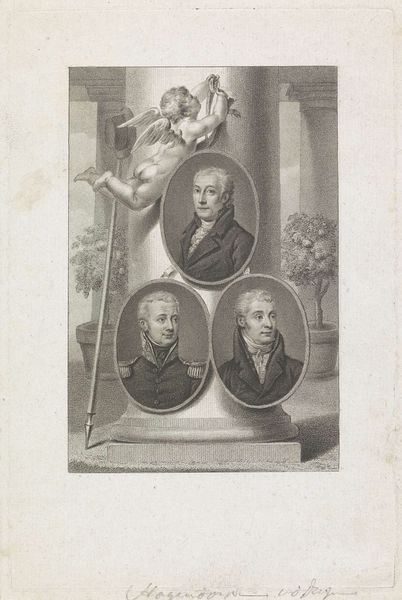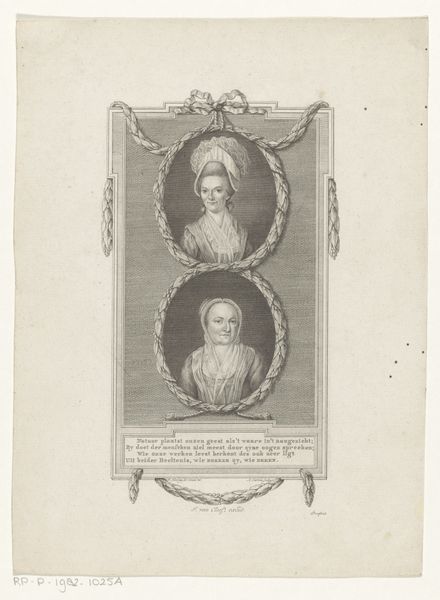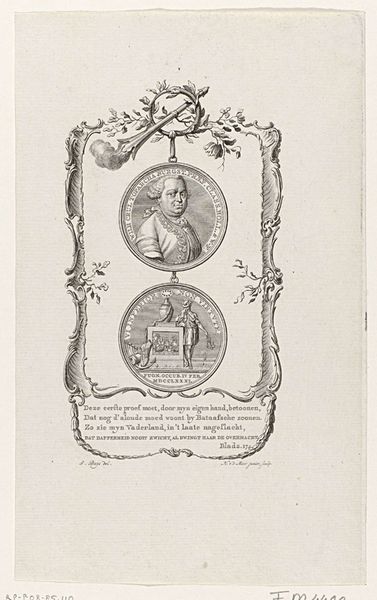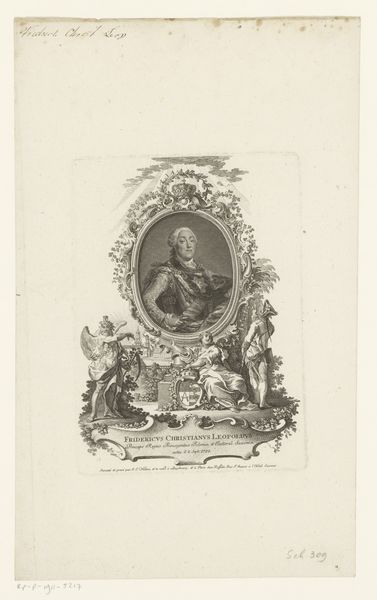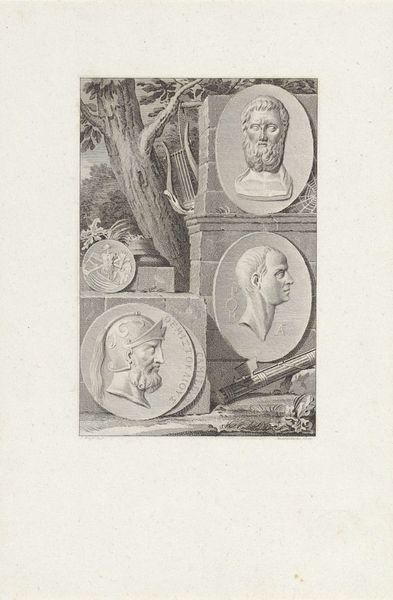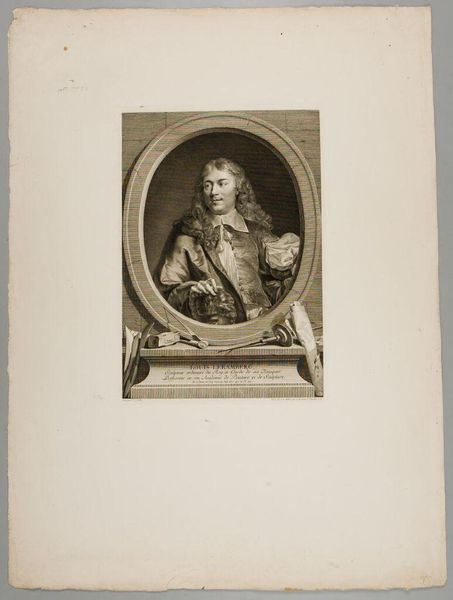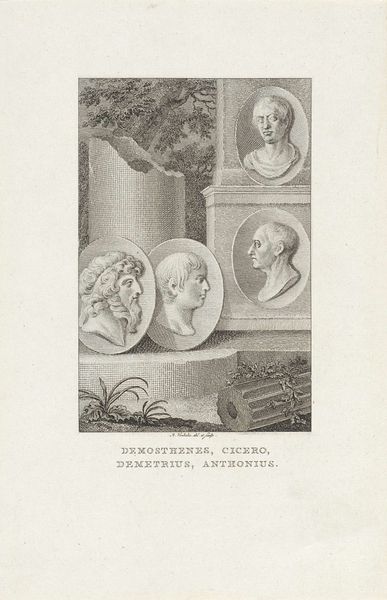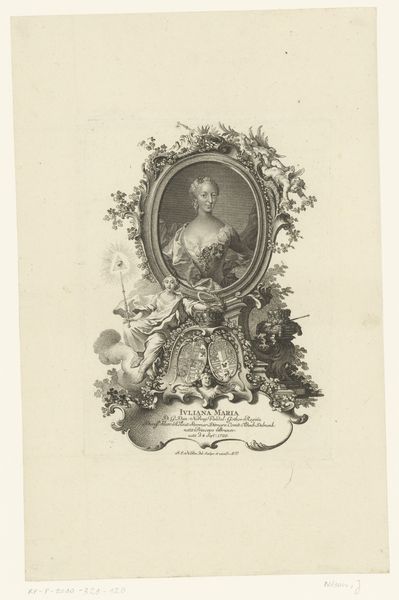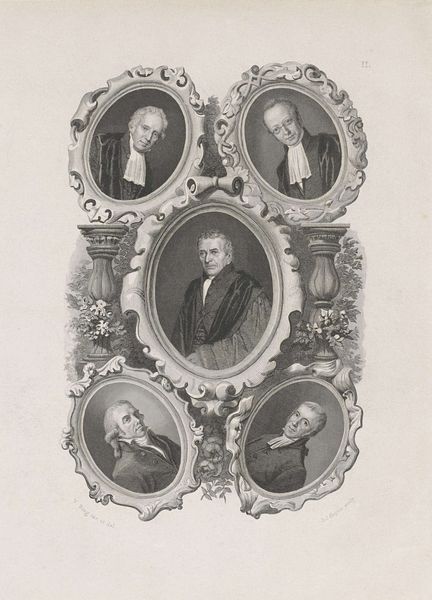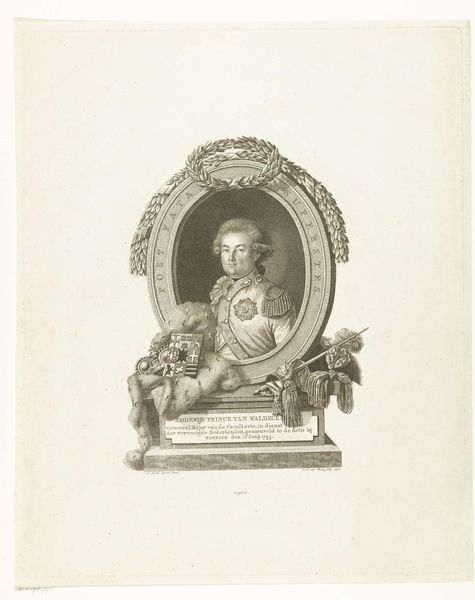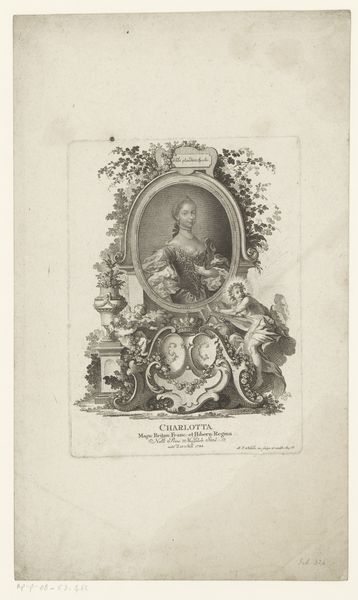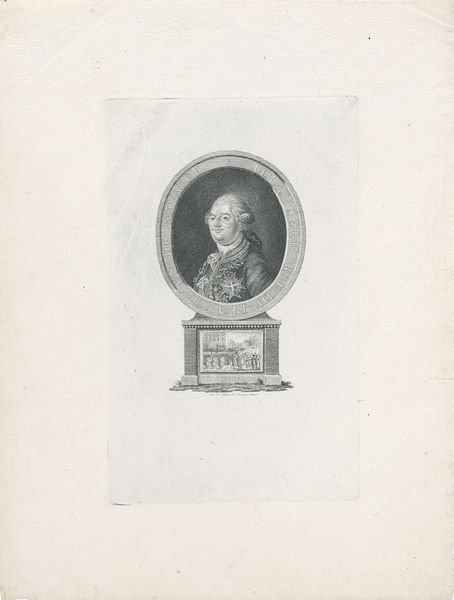
Monument met portretten van Napoleon I Bonaparte, tsaar Alexander I en Frans II 1804 - 1816
0:00
0:00
print, engraving
#
portrait
#
neoclacissism
# print
#
old engraving style
#
figuration
#
line
#
history-painting
#
academic-art
#
engraving
Dimensions: height 251 mm, width 163 mm
Copyright: Rijks Museum: Open Domain
Curator: This engraving by Reinier Vinkeles, dating from 1804 to 1816, is entitled "Monument met portretten van Napoleon I Bonaparte, tsaar Alexander I en Frans II". Editor: It's striking how rigidly composed it is. The portraits, set within these perfect circles and squares, create a really strong sense of order and hierarchy. It’s very… deliberate. Curator: Deliberate indeed. Consider the printmaking process—the labor involved in etching each precise line into the metal plate, the press and its operation. These were specialized skills; printmaking served as a tool for disseminating imagery and ideology to a broader public. Think about the socio-political climate! Editor: Exactly, this precision serves a clear purpose. Look at the neoclassical style; it lends itself perfectly to idealizing these figures. Napoleon above, a crown overhead… Alexander and Francis below. A clear visual hierarchy, reflecting power structures. Curator: But the relationships between these leaders were so fluid during the Napoleonic era. This image freezes a particular moment, constructing an idea of unified power. Editor: Yes, it certainly speaks to that. Semiotically, the crown, the ray of light… they're visual codes, all communicating authority and divine right, and legitimizing the empires in a language accessible to even a largely illiterate population. But do you think the rigid form makes the image seem static? Curator: I’m less concerned with static appearance and more concerned with the economic systems that upheld such artwork at this time and to whom it catered. Academic art and the networks that helped reproduce and distribute the piece across borders are all important. Editor: While I agree on its wide appeal, analyzing the monument's aesthetic qualities can teach us about their ambitions, not only how people at that time saw themselves, but how their leadership style was intended to impact viewers. It gives us a snapshot of cultural values during this crucial historical period. Curator: Precisely. And considering who purchased and displayed prints like these sheds further light on social structures and values. It reflects power. Editor: Thank you; your perspective on its material circumstances broadens my own appreciation of it as more than simply a work of aesthetics. Curator: And for me, your careful analysis makes it impossible for me to simply dismiss the thing.
Comments
No comments
Be the first to comment and join the conversation on the ultimate creative platform.
